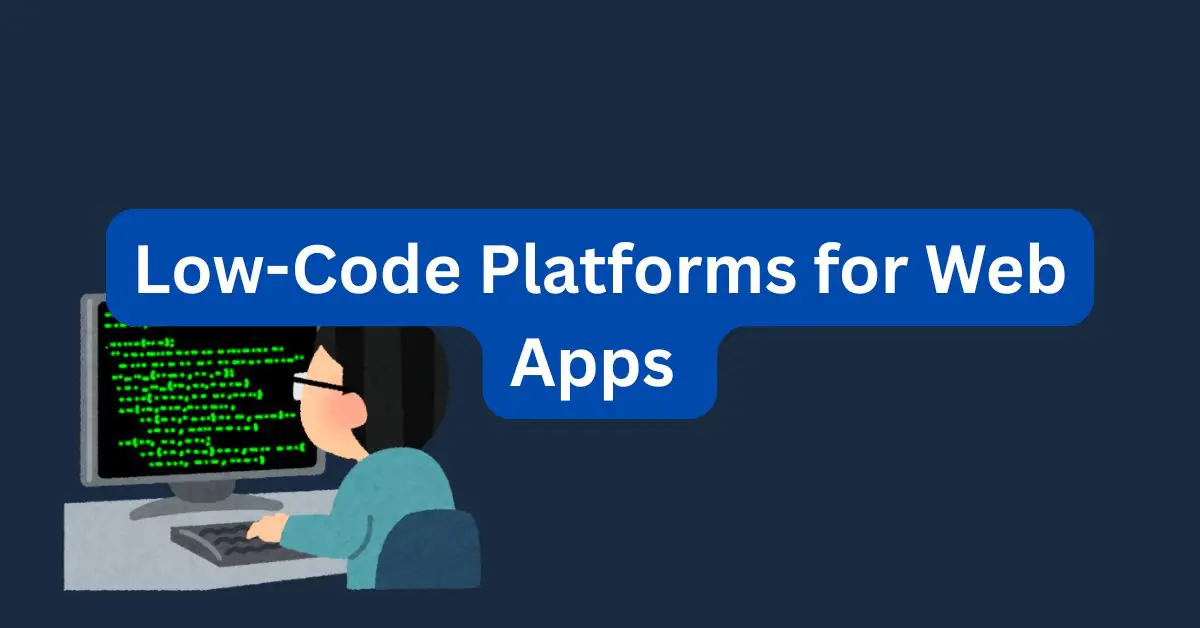|
Getting your Trinity Audio player ready... |
Published on: Makemychance.com
🚀 Introduction
In a world where speed-to-market is everything, low-code platforms have emerged as a game-changing solution for building powerful web applications—without writing extensive code.
Whether you’re a non-technical founder, a developer looking to speed up delivery, or a business team automating internal processes, low-code tools can help you build and deploy web apps quickly.
In this article, we’ll explore what low-code platforms are, how they work, their pros and cons, and the top low-code platforms for web apps in 2025.
💡 What Is a Low-Code Platform?
A low-code platform is a development environment that lets users create applications using a visual interface (drag-and-drop elements, pre-built components) instead of hand-coding everything.
These platforms offer:
- Pre-built logic and integrations
- Visual workflows
- Data connectors
- UI templates
They allow both developers and non-developers to rapidly prototype and launch functional web apps with minimal code.
✅ Benefits of Using Low-Code Platforms
| Benefit | Description |
|---|---|
| Faster Development | Build apps in hours/days instead of weeks/months |
| Lower Cost | Reduces development and maintenance cost |
| Scalability | Many platforms now offer enterprise-grade scalability |
| Cross-Team Collaboration | Business teams and developers can work together seamlessly |
| Easier Iteration | Update apps quickly without large deployments |
⚠️ Common Limitations
- Vendor lock-in: Migrating away from the platform can be hard.
- Customization limitations: Not ideal for highly complex business logic.
- Pricing: Can get expensive at scale or with advanced features.
🛠️ Top 5 Low-Code Platforms for Web Apps in 2025
1. OutSystems
Best for: Large enterprises and complex web apps
Why choose it:
OutSystems is an enterprise-grade low-code platform offering visual development, integrations, workflows, and full-stack deployment with a strong focus on scalability and performance.
2. Mendix
Best for: Rapid internal tools and customer portals
Why choose it:
Mendix supports both no-code (for business users) and low-code (for developers), making it a great choice for collaborative teams.
3. Bubble
Best for: Startups, SaaS MVPs, and solopreneurs
Why choose it:
Bubble is one of the most popular visual programming platforms that lets you build full-fledged web apps without writing code—perfect for launching MVPs.
4. Retool
Best for: Internal tools for developers
Why choose it:
Retool is aimed at developers who want to rapidly build admin panels, dashboards, and CRUD apps by connecting to any API or database.
5. AppGyver (now SAP Build Apps)
Best for: No-code cross-platform apps
Why choose it:
AppGyver offers a powerful free-tier and is backed by SAP, making it suitable for building both mobile and web apps using a drag-and-drop interface.
🧪 Low-Code vs. No-Code: What’s the Difference?
| Feature | Low-Code | No-Code |
|---|---|---|
| Target User | Developers + technical users | Business users / citizen devs |
| Customization | Allows custom scripts/code | Limited to visual logic |
| Flexibility | Higher | Lower |
| Use Cases | Web apps, APIs, integrations | Internal tools, forms, portals |
👨💼 Who Should Use Low-Code Platforms?
- Startups: Launch MVPs without hiring full dev teams.
- Enterprises: Quickly build internal tools and automation.
- Agencies: Deliver client apps faster.
- Freelancers: Offer affordable and quick solutions.
🧠 Pro Tips Before You Start
- Always check the export or backup options before committing to a platform.
- Plan for scaling and maintenance costs if your app grows.
- Choose a platform with good documentation and support.
🏁 Conclusion
Low-code platforms are revolutionizing web development by making it more accessible, faster, and collaborative. Whether you’re a startup founder building an MVP or an enterprise automating workflows, these tools are worth exploring.
If you’re planning to build a custom web app using a low-code platform or need expert guidance, reach out to our team at Makemychance—we’re here to help you make the smart choice.
🙋 Frequently Asked Questions
❓ Are low-code platforms good for production apps?
Yes, many low-code tools like OutSystems, Mendix, and Bubble are used to build full-scale production-ready apps.
❓ Can I migrate my app later if I outgrow the platform?
Some platforms support code export (e.g., Retool for front-end components), but others are fully hosted (e.g., Bubble), so choose wisely.
❓ Is low-code development secure?
Leading platforms follow enterprise-grade security protocols, but it’s important to review the platform’s security documentation.
Arsalan Malik is a passionate Software Engineer and the Founder of Makemychance.com. A proud CDAC-qualified developer, Arsalan specializes in full-stack web development, with expertise in technologies like Node.js, PHP, WordPress, React, and modern CSS frameworks.
He actively shares his knowledge and insights with the developer community on platforms like Dev.to and engages with professionals worldwide through LinkedIn.
Arsalan believes in building real-world projects that not only solve problems but also educate and empower users. His mission is to make technology simple, accessible, and impactful for everyone.



